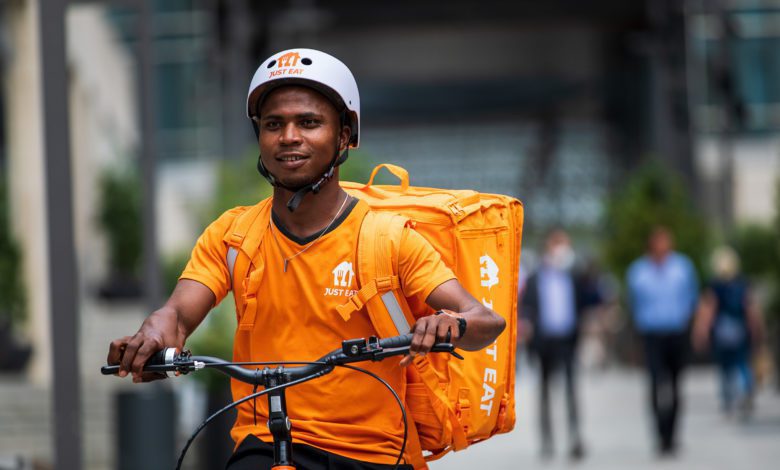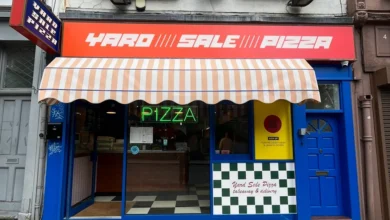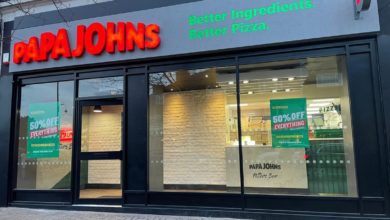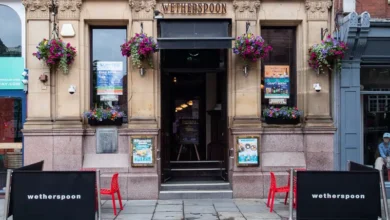Are the delivery apps too big to fail?
Catering Today examines whether delivery apps like Just Eat and Deliveroo can ever achieve profitability and what impact this drive for financial viability may have on restaurants

Last month, Just Eat launched Just Eat Plus, a membership service offering free delivery and special deals from certain restaurants for a fixed monthly fee. This followed in the footsteps of Deliveroo which launched a similar service back in 2017. This move is the latest ploy to drive profitability at the company. Just Eat has never posted a profit and lost €1.65bn (£1.43bn) for the year ended February 2025. Deliveroo made its first ever profit of £3m in FY24. However, this came as a result of the company leaving markets such as Australia, so it remains to be seen whether this is an outlier or a trend. Will these apps ever be profitable and how will this drive for profitability affect the restaurant industry?
Why are the apps unprofitable?
The general consensus is that these companies struggle to turn a profit because the margins in the restaurant industry are razor thin. To compound this, it is a highly competitive marketplace with consumers able to choose from at least three major players in Just Eat, Deliveroo and Uber Eats, not to mention smaller more niche apps like Hungry Panda which focuses on Asian restaurants. This means that the companies are having to invest heavily to stay competitive.
All three major apps are investing heavily in advertising to try and get ahead. For example, Just Eat has a deal with UEFA to sponsor men’s and women’s football tournaments like the Champions League and international tournaments like the Euros. This obviously gets a lot of eyes on the brand but comes at a steep cost. Apps also have to invest in giving favourable deals to popular restaurants to have them on their app exclusively, for example, Nando’s is available exclusively on Deliveroo. This can drive more traffic to the app, but is likely to cut into profit margins as Nandos will likely be paying less commission or receiving payment for this exclusivity.
Viktor Clintom, chief operations manager at Clintopia, explains: “They rely on thin margins and heavy spending on marketing, technology, and logistics. They operate in a highly competitive market, often subsidising customer discounts and paying significant commissions to restaurants, which squeezes profitability. Achieving scale is vital, but the costs of expanding delivery infrastructure and maintaining fast service remain high.”
Furthermore, James McCarthy, founder of Flipdish, believes that consumers are becoming more aware of the fact that dishes often cost more when ordered through the apps, which discourages them from ordering through them.
“With commission rates for restaurants regularly hitting 30%, these restaurants often have to pass this cost on to the customer. This is quite a risk when all a customer needs to do is look on the restaurant’s website or app and find a much lower price,” he says
How can apps drive profit?
The obvious answer to this is to become more operationally efficient, but that is sometimes easier said than done. Eddy Masaad, founder of Swiss Butter, believes that the companies could raise fees, monetise the data they collect, expand into non-food logistics, adopt more AI or consolidate through mergers. However, he states that each solution carries risk: these could cause consumer backlash against rising fees, tighter regulations requiring apps to treat riders as employees, and reduced investor patience for ongoing losses,” he says.
Clintom believes that the key to profitability could be developing closer relationships with restaurants and helping them on the operational side of things. “Building stronger partnerships with restaurants to reduce commission rates while improving order volume could help. Some may diversify into other areas such as grocery delivery or virtual kitchens to open new revenue streams. However, balancing profitability with customer expectations around price and service is a delicate challenge,” he says.
McCarthy agrees with this idea, believing that some apps could begin to help with other operational tasks outside of just delivery, allowing them to take a larger cut of the revenues driven by these companies. He also thinks that some apps could choose to prioritise bigger restaurants exclusively.
How could these changes affect restaurants?
Any changes to commissions or fees in the name of profitability could cause issues for restaurants, especially smaller ones. It is well documented that restaurants are struggling with their own profitability, so many of them will be unable to absorb any extra costs, especially as many smaller restaurants rely quite heavily on the delivery apps. McCarthy believes it could cause independents to be pushed down the listings or out of them entirely.
Isabelle Shepherd, director of hospitality at accountancy firm HaysMac, adds: “They are certainly not just going to accept the cost being put up. Some might start to look at whether they’re already working with one business exclusively and look to move away from that exclusivity agreement and work with multiple delivery app providers.”
What if the worst happens?
If one or multiple of the delivery apps were to go under, then it would have wide-ranging effects on the industry. Deliveroo suddenly and unexpectedly ceased trading in Australia in 2022, which caused many issues for companies in the country. One business owner in Canberra told The Guardian that he had lost 30% of his business overnight and had likely lost AUD$30,000 (£14,500) over three days. Alongside this, thousands of delivery drivers who worked with Deliveroo were suddenly out of work.
However, if the same were to happen in the UK it would potentially have some positive effects. From the perspective of the delivery apps, one less competitor in the marketplace would make turning a profit a bit easier. It may also give restaurants a reason to reevaluate their relationship with delivery apps, although any restaurants with favourable deals may see them become less favourable with less competition around.
Masaad believes that a solution to this eventuality is for restaurants to diversify, building direct relationships with customers, providing high-quality in-house takeaways, and owning their digital presence.
On the other hand, Shepherd believes that it is not viable for many restaurants to take delivery services in-house as they do not have the cash reserves to invest in everything needed to run a functioning delivery service. For Masaad though, having control over Swiss Butter’s own operations is more important than overall sales “We prefer to preserve the integrity of the dine-in experience, which for us means more than incremental sales that come at the expense of quality and customer satisfaction,” he says.
Are the apps too big to fail?
“It feels like there is always just going to be the next buyer or funder out there for them, that’s what’s happened to date and it’s hard to see how that wouldn’t continue,” says Shepherd. This is the consensus opinion around the delivery apps, while they cannot remain unprofitable forever, the relationship between the apps and the hospitality industry is too symbiotic for the apps to fail. Nonetheless, most agree that the apps cannot continue in their current mode. Masaad believes that they will survive but there will be less of them and it will become more expensive for both the restaurants and consumers.
McCarthy believes that the apps could be under threat from LLMs such as Chat GPT and other competitors. “Why would you go to a marketplace app to order if you could just ask ChatGPT to order for you? Consumers in the future might expect to be able to use an AI-enhanced search engine that can place their order directly with the restaurant,” he says.
Seb Robert, CEO and founder of last-mile delivery service Gophr, agrees that AI is an existential threat to the apps. “Instead of manually choosing meals or browsing menus, users are being gradually given the ability to ask a chatbot to make decisions for them, as it has knowledge of their preferences and past orders. It doesn’t need a platform UI to navigate, and so the user doesn’t either.
“If this behaviour scales, platforms like JustEat, Deliveroo, and Uber Eats risk being reduced to just the infrastructure. If restaurants can plug directly into AI systems and then use the cheapest available fleet for fulfilment, the logic of paying a 30% cut starts to fall apart. That is the new risk: being commoditised and disintermediated at scale,” he says.







